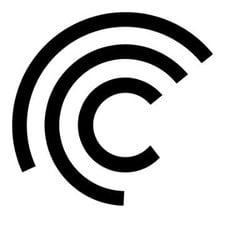
Within the DeFi and cryptocurrency sector, new protocols and applications have complete or partial control over a client’s assets. Nonetheless, for the industry to flourish, customers must be guaranteed that protocols and institutions truly hold the assets they claim. To do that, they must show proof of reserve, especially after the collapse of the world’s second-largest crypto exchange, FTX.
Crypto Exchanges Need to Publish Proof of Reserve
After the events between FTX and Binance, Binance CEO CZ encouraged industry participants to show “proof of reserves.” Many crypto exchanges are scrambling to demonstrate their fund reserves as fears of insolvency grip crypto investors after the FTX’s collapse.
📣 In light of recent events, exchanges and other centralized crypto entities will need to demonstrate Proof of Reserves on a regular basis.
A decentralized solution providing this is even more important. Do you think SupraOracles should prioritize a Proof of Reserve product?⚡️
— SupraOracles (@SupraOracles) November 10, 2022
Until November 11, to increase transparency, nine exchanges – Binance, Gate.io, Huobi, KuCoin, Poloniex, Bitget, OKX, Deribit, and Bybit – have stated that they would publicize their Merkle tree reserve certificates.
Each user’s assets are recorded in the database’s ledger in a centralised cryptocurrency exchange. The total amount of their assets represents the entire value of the user’s assets.
Merkle trees allow exchanges to keep each user account’s hash value of assets in the “leaf nodes”. Then, there’s a need to audit the assets in the leaf node and verify the users’ holdings by a third party.
Proof of Reserve Prevents CeFi Apps From Insolvency
Most centralised exchanges and CeFi crypto platforms now store collateralisation and asset data in their proprietary databases. In addition, exchange or loan funds from multiple clients are frequently held in the same wallet.
Proof of reserve ensures that protocols do not engage in secretive fractional-reserve activity, lend more than they have in reserves and hope borrowers will not withdraw their assets too rapidly. If this occurs, it might cause a run on the protocol, similar to a previous bank run.
Instead of completely prohibiting fractional reserve banking for cryptocurrency, the Federal Reserve warns that fractional reserve activity in digital assets has significant hazards, even if the protocol is insured and rigorous reserve ratios are maintained.
In contrast to U.S. bank accounts, typically insured up to $250,000 by the FDIC, centralised crypto exchange accounts and other protocols that handle digital assets are not protected. If a centralised exchange or even a traditional bank stores digital assets, there is no legal guarantee that those assets will remain secure when the protocol becomes insolvent or shuts down.
While digital asset platforms in the US are required to provide audited financial statements from a certified public accountant (CPA) to state authorities to maintain their money transmission licence, this information is typically unavailable to the public.
Proof of Reserve is Essential for Stablecoins
Stablecoins are digital assets created to maintain a fixed, stable value, generally pegged to a fiat currency like U.S. dollar. There are multiple stablecoins, with Tether being the most popular (USDT). Questions regarding the reserves held by Tether have generated much discussion.
Initially, Tether said it held 100% of the UDST in dollar reserves, and UDST was exchangeable for real U.S. dollars. However, their story has evolved several times, with the corporation saying that a large portion of their reserves is held in commercial paper (short-term loans to other companies).
It is still unknown how much or what sort of assets Tether maintains to support its stablecoin. Some regulators are concerned that a run on Tether, which presently has a market capitalisation of more than $70 billion, might precipitate a crypto market meltdown and further destabilise the global financial markets.
If stablecoins such as Tether used proof of reserve, regulators and the general public would be certain that these coins are as stable as the assets they claim to be backed by.
Many Tokens Also Benefit From Proof of Reserve
Proof of reserve audits can benefit wrapped tokens, particularly wrapped tokens based on commodities, such as wrapped gold tokens on digital commodities exchanges.
Unlike synthetic gold tokens, the issuers of wrapped gold tokens claim to hold 100% of the gold value they issue in real, physical gold reserves or the equivalent value in gold receipts or gold ETFs.
Wrapped bitcoin tokens are another popular token type benefiting from proof of reserve. Like stablecoins or gold-wrapped tokens, if these tokens were not genuinely backed by bitcoin, the value would plummet, causing investors to incur enormous losses.
Without an audit, it is extremely difficult to validate collateralisation claims. If proof of reserve audit were undertaken on any wrapped assets that potential investors own or want to hold, they would certainly sleep much easier at night.
However, proof of reserve is not confined to tokens wrapped or backed by assets or commodities. It is also useful for cross-chain tokens, liquidity pool tokens, interest-accumulating tokens, and other tokenised asset kinds.
Traditional Financial Institutions Need Proof of Reserve
Traditional financial institutions’ use of bitcoin and other digital assets poses a new challenge for auditors, accountants, and regulators. Digital assets cannot be stored directly in a traditional bank account and must instead be held in crypto wallets.
With the US first bitcoin ETF introduced in October 2021, crypto assets will begin to flood more traditional financial markets and financial instruments. Whether they own crypto assets directly or indirectly, proof of reserve will be critical for these sorts of funds, as they are subject to more stringent regulation. The same principle applies to other financial vehicles, including hedge funds, that undergo independent audits.
Proof of reserve will become much more crucial if and when U.S. institutions begin holding crypto for clients, which is imminent. In October of 2021, U.S. authorities at the FDIC stated that they are actively seeking a way for conventional banks to store digital assets on behalf of their clients. It’s uncertain if the FDIC, another government agency, will cover these assets or if private insurance companies or they will stay uninsured.
Oracles Provide Secure Proof of Reserve Services
Some protocols give clients public evidence of reserve on-chain. Others privately have their reserves audited by a professional auditor. Some do both. In both instances, blockchain oracles can deliver vital services.
Oracles, which feed blockchains with “real-world” off-chain data, can communicate blockchain data to off-chain applications. This information is necessary for a custodial protocol, token issuer, or financial institution to transmit data to a third-party auditor securely.
SupraOracles Proof of Reserve enables smart contracts to use fast, accurate data to demonstrate any on-chain asset’s true collateralisation. With safe data queries, SupraOracles can guarantee that a protocol or product is backed by off-chain reserves, such as gold or U.S. dollars, and digital assets secured by smart contracts.
SupraOracles can quickly activate a decentralised oracles network to monitor smart custodial contracts at predetermined intervals to guarantee that collateralisation does not fall below a certain threshold. With this service, exchanges, protocols, tokens, and institutions can show investors, regulators, and the general public that they are reliable, reputable, and trustworthy.











































































Be the first to comment